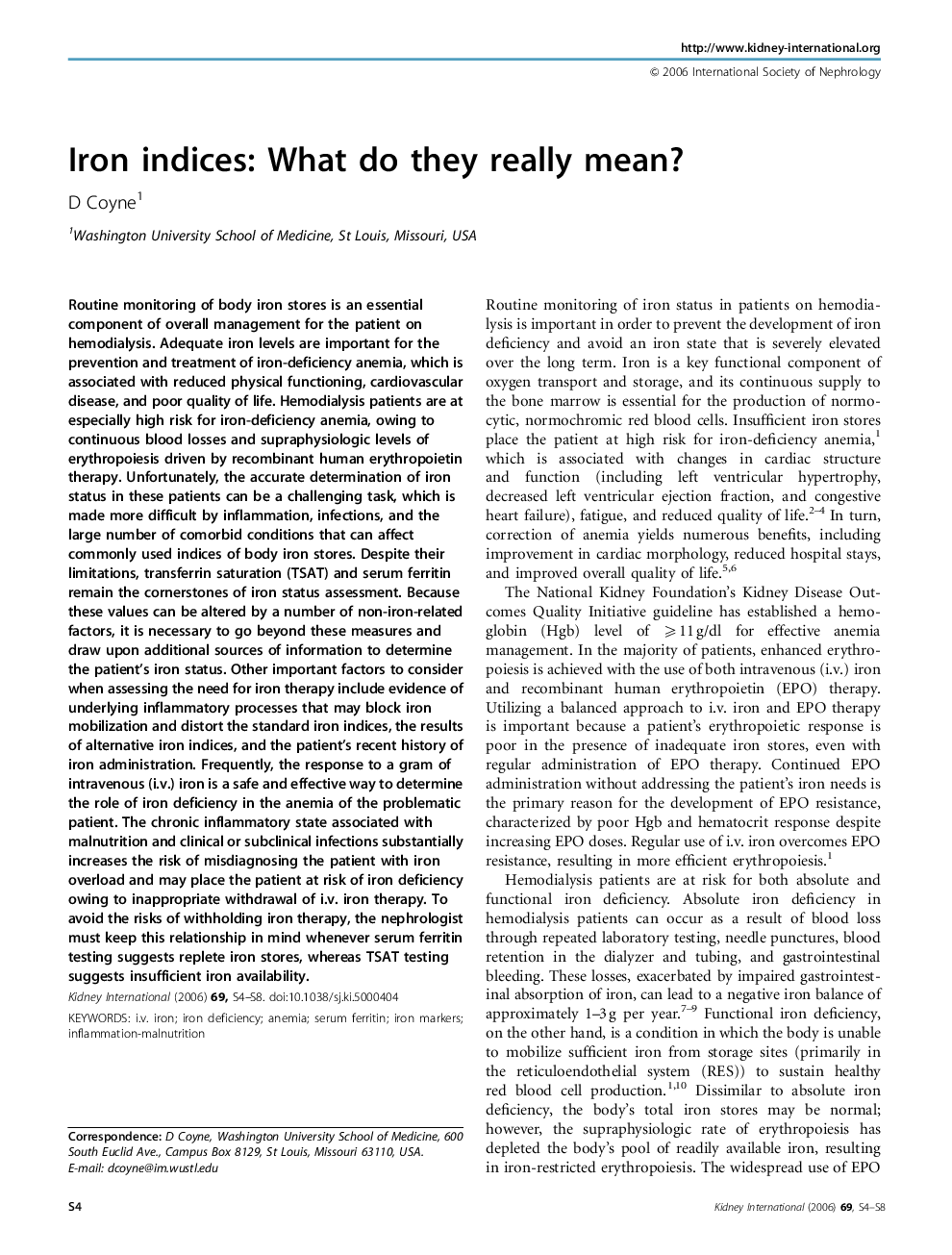| کد مقاله | کد نشریه | سال انتشار | مقاله انگلیسی | نسخه تمام متن |
|---|---|---|---|---|
| 8773641 | 1599170 | 2006 | 5 صفحه PDF | دانلود رایگان |
عنوان انگلیسی مقاله ISI
Iron indices: What do they really mean?
دانلود مقاله + سفارش ترجمه
دانلود مقاله ISI انگلیسی
رایگان برای ایرانیان
موضوعات مرتبط
علوم پزشکی و سلامت
پزشکی و دندانپزشکی
بیماریهای کلیوی
پیش نمایش صفحه اول مقاله

چکیده انگلیسی
Routine monitoring of body iron stores is an essential component of overall management for the patient on hemodialysis. Adequate iron levels are important for the prevention and treatment of iron-deficiency anemia, which is associated with reduced physical functioning, cardiovascular disease, and poor quality of life. Hemodialysis patients are at especially high risk for iron-deficiency anemia, owing to continuous blood losses and supraphysiologic levels of erythropoiesis driven by recombinant human erythropoietin therapy. Unfortunately, the accurate determination of iron status in these patients can be a challenging task, which is made more difficult by inflammation, infections, and the large number of comorbid conditions that can affect commonly used indices of body iron stores. Despite their limitations, transferrin saturation (TSAT) and serum ferritin remain the cornerstones of iron status assessment. Because these values can be altered by a number of non-iron-related factors, it is necessary to go beyond these measures and draw upon additional sources of information to determine the patient's iron status. Other important factors to consider when assessing the need for iron therapy include evidence of underlying inflammatory processes that may block iron mobilization and distort the standard iron indices, the results of alternative iron indices, and the patient's recent history of iron administration. Frequently, the response to a gram of intravenous (i.v.) iron is a safe and effective way to determine the role of iron deficiency in the anemia of the problematic patient. The chronic inflammatory state associated with malnutrition and clinical or subclinical infections substantially increases the risk of misdiagnosing the patient with iron overload and may place the patient at risk of iron deficiency owing to inappropriate withdrawal of i.v. iron therapy. To avoid the risks of withholding iron therapy, the nephrologist must keep this relationship in mind whenever serum ferritin testing suggests replete iron stores, whereas TSAT testing suggests insufficient iron availability.
ناشر
Database: Elsevier - ScienceDirect (ساینس دایرکت)
Journal: Kidney International - Volume 69, Supplement 101, May 2006, Pages S4-S8
Journal: Kidney International - Volume 69, Supplement 101, May 2006, Pages S4-S8
نویسندگان
D. Coyne,